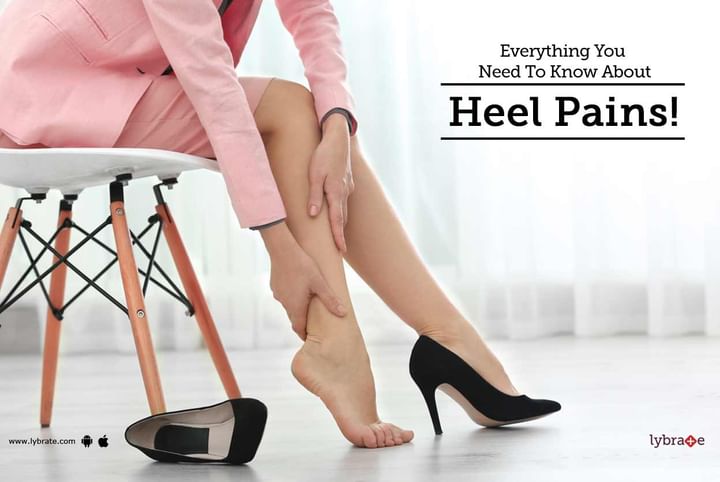Everything You Need To Know About Heel Pains!
Heel pains can be extremely annoying. Most people experience the pain either behind the heel or just under it. Heel pain can affect anyone, irrespective of their age and sex. The pain, though common, seldom poses a threat or any serious health complications.
Factors responsible for heel pain
Walking, running or exercise, the heel bone or calcaneus bears the maximum stress. It acts a shield and provides strong support to the body. However, an injury, infection, or some medical conditions can affect (damage) the heel, resulting in a mild to severe pain. Heel pain can be triggered by;
Plantar Fasciitis: It is one of the most common causes of heel pain. Plantar Fasciitis is a condition characterized by inflammation of plantar fascia (tissue connecting the tip of the foot to the heel). The inflammation mainly results from overstretched plantar fascia. Tight calf muscles (Achilles tendons), obesity, strenuous physical activities, faulty footwear or flat feet can overstretch the plantar fascia.
- Posterior tibial neuralgia or Tarsal tunnel syndrome (TTS): TTS is a painful compression neuropathy (ankle or foot) where there is compression of the tibial nerve.
- Heel bursitis: In heel bursitis, the retrocalcaneal bursa (located at the back of the heel) gets inflamed. Excessive pressure from the footwear or improper landing on the heel acts as a catalyst, resulting in the inflammation. In heel bursitis, one experiences the pain behind the heel or deep within the heel.
Severe inflammation of the heel pain
- Achilles tendinitis: In Achilles tendinitis, there is an injury to the Achilles tendon (tissue that connects the heel bone to the calf bone). Continuous and repeated stress and pressure on the Achilles tendon cause the injury. Though anyone can be affected by Achilles tendinitis, it mostly affects runners and sports person.
- Sever's disease: Common among children (7-15 years), Sever's disease occurs when there is an inflammation of the epiphyseal plate (growth plate) in the heel.
- Heel bumps: It results from an excessive rubbing of the immature heel bone. Teenagers are mostly affected by this. Heel bumps can also affect ladies wearing high heels while their heel bones are yet not matured.
- Conditions like, Gout, Bone cyst, Rheumatoid Arthritis, Osteoporosis, Bone inflammation due to infection (Osteomyelitis), Peripheral neuropathy, Morton's neuroma can also cause the heel pain.
Treatment and Prevention:
Seek medical assistance in case of
- Heel pain accompanied by fever, swelling, and numbness.
- Pain that lasts longer than usual.
- Difficulty in bending the foot downwards.
- The heel pains even when you are resting.
Treatment:
- Physiotherapy is the best way to deal with a heel pain.
- Corticosteroids.
- Non-steroidal anti-inflammatory drugs are also effective against heel pain.
- Assistive devices such as Insoles and orthotics can help speed up the healing process.
- Night splints, fitted to the foot and the calf at night (before sleep) can provide great relief.
- In extreme cases, surgery may be recommended.
Remember to
- Rest as much as possible.
- Go for proper fitted, good quality footwear.
- Apply ice compress on the affected area.
- Maintain a healthy body weight.
- A proper warm-up prior to any sports activities or exercise.
In case you have a concern or query you can always consult an expert & get answers to your questions!



+1.svg)
